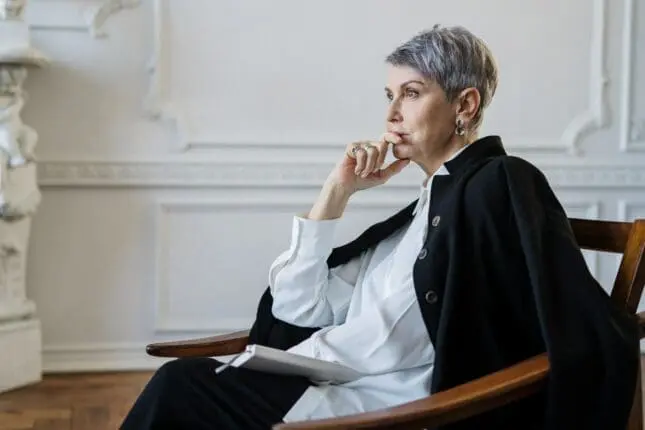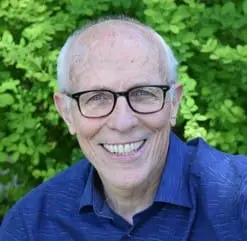Q: I feel something is missing from my work with my clients—some level of deep connection. How can I engage myself more fully with clients while maintaining professional boundaries?
A: Many years ago, the Chinese qigong master I study with was thinking about becoming a psychotherapist so he could help people here in the United States. But when someone told him that it was considered inappropriate for therapists to love their clients, he was incredulous. “Patrick, how can you help your clients if you don’t love them? Don’t you know that love is the most powerful healing force in the universe?”
I thought his comment sweet and slightly odd; perhaps it had something to do with the difficulty of a nonnative speaker’s struggle with our language. Mostly, I wrote it off as naïve. As I spent more time as his student, however, I gradually learned that what he was talking about wasn’t the personal love we feel for a spouse or our children, but love as a heart energy within all of us that’s far more spacious, selfless, and unqualified. Understanding and experiencing this kind of love has fundamentally changed the way I practice psychotherapy.
Naomi came to therapy not knowing exactly what was wrong with her. In fact, her life was apparently going well: her marriage was basically happy, her career was humming along, though it wasn’t very exciting, and her last child was about to graduate from college, allowing her a coveted sense of freedom she hadn’t known for almost 30 years. But she felt at loose ends, apathetic, generally unenthusiastic, and lacking emotional energy. She told me she didn’t feel particularly depressed, but was unable to engage fully with life.
We had a nice connection; she and I were the same age and shared an educational background, social interests, and political leanings. What’s more, we liked each other. A few weeks into the therapy, she came in and began to tell me of a little fight she’d had with her husband about how they were spending their evenings. She liked to take some quiet time alone after dinner and read, or pay bills, or catch up on e-mails to friends and the kids. He liked to talk after dinner over a cup of tea. Later, he enjoyed watching TV, and that was when she liked to talk. They’d had a polite argument that had ended with her walking out of the family room in frustration. This was a long-standing issue, and their conversations about it often ended on a negative note, as it had that night. Naomi was quite distressed and wondered whether it was she or her husband who had the problem. She also wondered whether she was blocking her emotions and needed to get in touch with something.
I asked her to breathe and relax into her body. We’d done some of this mind-body work before; she’d come to me because she knew I used a holistic approach to therapy and healing. Then I asked her to sink her consciousness into her heart. She’d already learned how easy this is—that all you need to do is imagine a light, a candle, or the sun, any image that helps you get in touch with the goodness that’s always present in the center of your heart. She closed her eyes, her face relaxed, and after a few breaths, some tears came. A couple of minutes later she opened her eyes, looked down, and said almost in a whisper, “I don’t know if I can.”
I asked her to breathe into those words and to try and stay in her heart. More tears came. “I don’t know what’s happening,” she said. More quiet tears flowed, and then she was struggling not to cry and seemed to be trying to pull back and shut down.
“Naomi, I want you to stay focused in your heart,” I said. “I want you to try and see whether you can stay connected to me, to feel my care, to feel my affection for you. I want you to see whether you can let me be with you so you don’t feel so alone, and whether you can also stay connected to what’s happening in your heart.” She broke down and wept. I still didn’t know why she was crying, but I felt it really wasn’t important that I do.
When she was done crying and able to compose herself, she slowly lifted her head to look at me. She saw my face, a whimper escaped, and she broke into deep sobbing. After a couple of minutes of this, she forced herself to stop and asked with some dismay, “Why do you look at me that way?” and sobbed some more. Once more, after a few minutes, she stopped sobbing, lifted her eyes to my face, and said brokenly, “Why do you look at me with such, such kindness?” She wept again.
“Naomi, I’m only trying to do what I’m asking you to do,” I said. “Breathe, relax, into my heart, and stay connected to you and your open heart.”
“But why do you feel such kindness toward me?” she asked again. I said, “Well, I like you. I feel we have a nice connection. And your suffering and vulnerability just naturally opened up my heart even more to the natural goodness I so clearly see in you.” She seemed puzzled by my answer.
When she was more composed, I asked her what had prompted her emotions when she thought about talking from her heart. She winced, closed her eyes, and said, “I wanted to say to myself, to you, to my husband that I was feeling very lonely, very distant from him, and, . . .” she choked up a bit, “and that I could see it was my not wanting to be vulnerable with him that made me feel so locked up inside.”
“What do you think would happen if you told him all of that, speaking from your heart?” I said. She looked very sad, cast down her eyes again, shook her head some more, and said, “I can see his being very open to me, even kind and loving.” She got teary and shook her head more. “I’m just not ready to tell him that. It makes me feel too vulnerable. Maybe when I sort this out more.” She was quiet for a moment and then looked up and said a bit hastily, “Is that OK?” I smiled softly and said, “Why wouldn’t it be?” She broke down crying again.
What I’ve discovered in my qigong practice I’ve learned to translate into a mind-body-heart model of therapy. I always try to be mindful of my breathing, of maintaining a relaxed body, and especially of sinking my consciousness into my heart. All of these are easily done with little practice, especially dropping your consciousness into your heart. If you believe that, in your heart, there’s an inherent love, or light, or soul, or what I call goodness, then you can imagine a simple image. A light is the most common, but the sun or moon or a religious icon will work. Then just conjure that image in your heart area, and breathe, relax, and focus on that place of goodness. Often you’ll feel a softening or relaxing in that area that helps you begin to center yourself there and reach out from that place. You don’t need to meditate, read books, or study anything to do this mind-body-heart practice. Most clients get it the first time I encourage them to try, and can return to it quickly when I remind them to.
When I do this, I find an energy that feels like love, but much bigger and purer than what we usually mean by love. It’s a warm, soft, outgoing but unthreatening kind of energy, which clients frequently mention, always enjoy, and want to experience in themselves. So I teach them how to use this mind-body-heart practice in our therapy sessions—which means they get to practice it in their lives.
There are several qualities about this energy that make it such a wonderful practice for a psychotherapist. First, when I see and acknowledge my client’s innate goodness from this heart-centered place, I can’t help but know my own. Second, this energy doesn’t allow me to distance myself from the client. While I’m clearly aware of professional boundaries and responsibilities, I deeply sense this person as a human being struggling with life, just as I’m a human being who’s struggled in my own life. The energy gives me the sense that something in me—something invisible, yet alive—is reaching toward something in my client. It provides an intimacy and vulnerability in our relationship that transforms the therapeutic process. Third, because it’s an energy, not an emotion, my capacity to be present and compassionate is limitless. I never feel drained after connecting with a client like this; I feel enlivened. Finally, I can speak decisively when my client needs me to be strong and directive. For instance, I may have to say he or she is being cruel and mean, if that’s so, but I can do it without distancing and becoming judgmental.
In therapy, this approach turns what can sometimes be a dry or mechanistic technique into a dynamic process. I can maintain my boundaries, practice my craft, and yet become intimate and vulnerable with my clients. This kind of practice not only challenges me to be present and compassionate, but helps me become more alive and fully human. For clients, this offers them an experience of connecting with another deeply and taking in loving-kindness, and models for them how to do it with others.
Photo by cottonbro/Pexels
Patrick Dougherty
Patrick Dougherty, MA, LP, has over 40 years of clinical experience. He is also working with an international nonprofit that works with intergenerational and collective trauma around the world (pocketproject.org). He has just completed his 3rd book, a teaching memoir,My Trauma Was Never Just My Trauma: We Had It Wrong. Learn more at movingthroughit.org.













